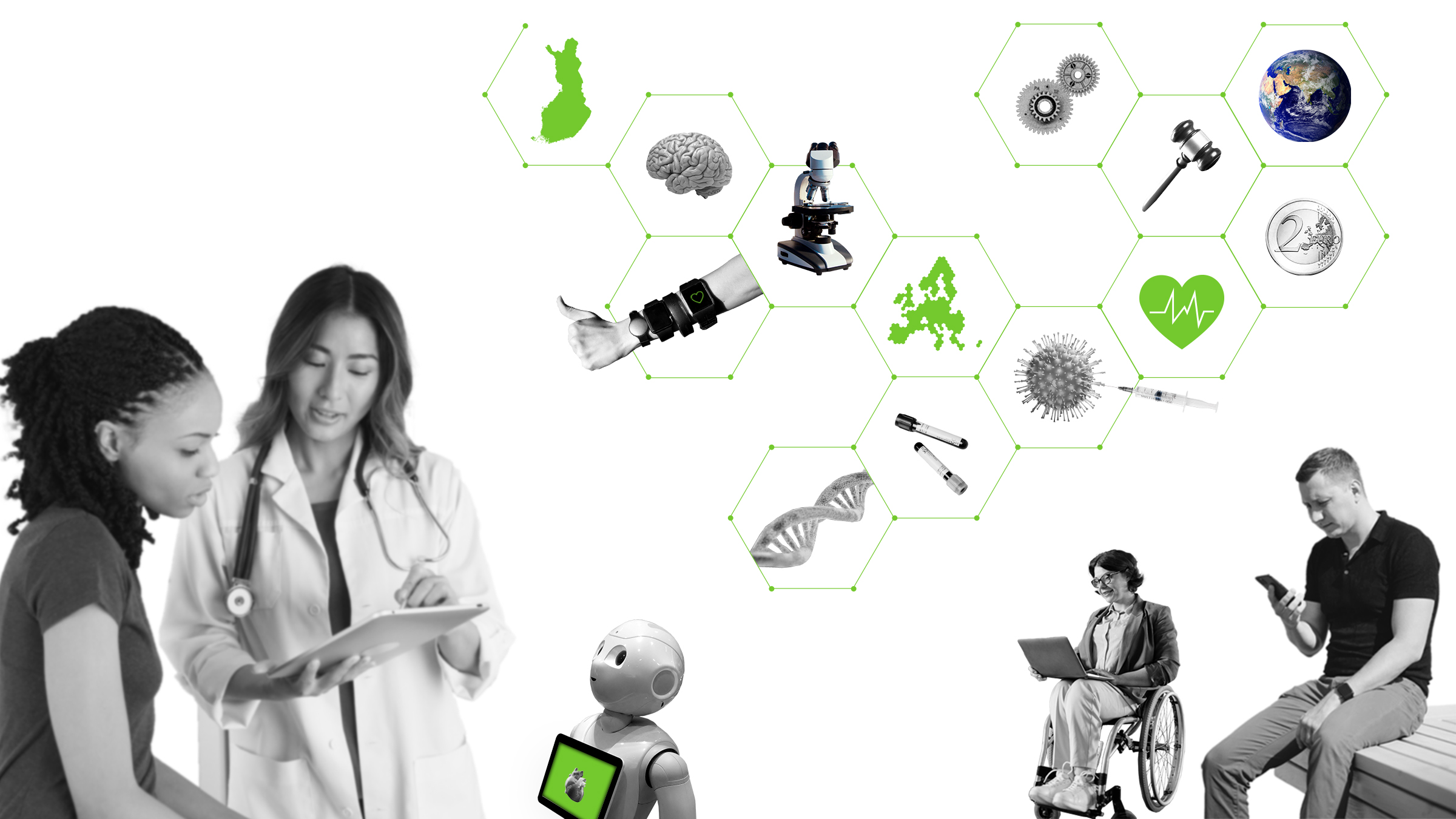Public-sector indebtedness and growing labour shortages together with an ageing population are putting pressure on the financing of social welfare and healthcare services. One solution to ensure quality care, improve productivity and curb costs is to enable the efficient use of the data generated by social welfare and healthcare, says the Sitra study (in Finnish, incl. summary in English). Data generated in social welfare and healthcare services refers to health data, such as patient, medication and treatment data and data related to social services.
The implementation of the study’s recommendations would result in an estimated EUR 770 million in annual savings in social welfare and healthcare. This could free up 5,000 nurses and 1,300 doctors to provide care more efficiently and ease the increasing shortage of care professionals. The recommendations would also enable better and more efficient social welfare and healthcare services and promote the transition towards more personalised healthcare and disease prevention.
“The Finnish social welfare and healthcare system faces important choices in the upcoming government term. For understandable reasons, the first phase of the health and social services reform focused on administration and structures. The next phase of the reform should be done so that the focus shifts to data,” says Kristo Lehtonen, Director of the Fair data economy theme at Sitra.
Sitra recommends, among other things, that the quality of data generated in social welfare and healthcare should be improved, that people should have easier access to their personal data and that legislation should enable and oblige the use of artificial intelligence (AI) in the social welfare and healthcare sector. The study “The social welfare and healthcare system powered by data” was prepared by HUS’s former CIO Antti Larsio. Some 20 social welfare and healthcare experts were interviewed for the study.
Data remains siloed for many reasons and slows down care provision
Data generated by social welfare and healthcare circulates within organisations that provide social welfare and healthcare services and to some extent between service providers. Data is also shared within and between national data system services. The problem is that data does not move sufficiently well along the care pathway. If this could be changed, it would make care work more efficient.
There are numerous examples of data-related challenges: currently, patient health data does not move from healthcare centres to emergency services in sufficient scope or speed. Patient care data, such as ECG or EEG results, is not always passed on when care locations change. Patients cannot transmit their data themselves electronically to other care providers or their data systems.
Often, when experts from different fields work together, information is exchanged orally and entered manually into different systems. There are also challenges in multidisciplinary co-operation between social welfare and healthcare services and the education sector. The same information is currently recorded in many systems, such as social welfare client records, healthcare patient records and the student welfare systems run by municipalities.
Data and AI could help doctors, nurses and other professionals to work more efficiently and provide more personalised care.
“AI can be used in preventive care, such as identifying people belonging to risk groups. AI would also make it possible, for example, to record care procedures by dictation. At present, it takes staff even more time to make records than to examine patients,” says Sitra’s Kristo Lehtonen.
Social welfare and healthcare data should be able to move within well-being services counties, and when necessary between them, and in the long term from one EU country to another. Lehtonen points out that health data sharing has also been developed at European level.
“The EU’s goal is for health data would move smoothly from one country to another and between different patient information systems, as needed. Finland must prepare for this development.”
Savings could be achieved quickly
The ageing of the population and the low birth rate, combined with growing public sector indebtedness, require Finland to make a strong commitment to reform, including by decision-makers. According to Markus Kalliola, Project Director at Sitra, the quickest acting wellbeing services counties could tap into this savings potential already in this parliamentary term.
“Our recommendations do not call for more budget funds, so the wellbeing services counties should prioritise development actions in line with the recommendations. Doing things in a new way would free up development resources and labour,” says Kalliola.
Sitra’s study “The social welfare and healthcare system powered by data” (in Finnish) was published on 8 May 2023. With its study, Sitra wants to promote a national debate on how to make better use of social welfare and healthcare data, its opportunities it offers and prerequisites.



